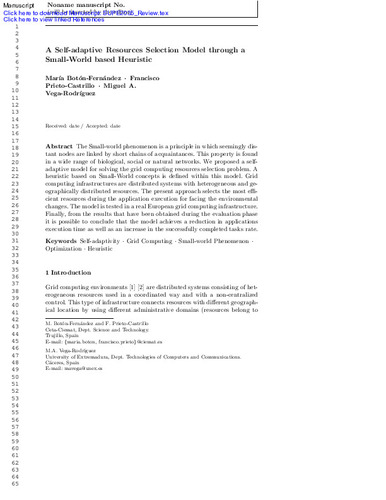A self-adaptive resources selection model through a small-world based heuristic
Autor(es) y otros:
Palabra(s) clave:
Self-adaptivity · Grid computing · Small-world phenomenon · Optimization · Heuristic
Fecha de publicación:
Versión del editor:
Citación:
Descripción física:
Resumen:
The small-world phenomenon is a principle in which seemingly distant nodes are linked by short chains of acquaintances. This property is found in a wide range of biological, social or natural networks. We proposed a self-adaptive model for solving the grid computing resources selection problem. A heuristic based on small-world concepts is defined within this model. Grid computing infrastructures are distributed systems with heterogeneous and geographically distributed resources. The present approach selects the most efficient resources during the application execution for facing the environmental changes. The model is tested in a real European grid computing infrastructure. Finally, from the results that have been obtained during the evaluation phase it is possible to conclude that the model achieves a reduction in applications execution time as well as an increase in the successfully completed tasks rate.
The small-world phenomenon is a principle in which seemingly distant nodes are linked by short chains of acquaintances. This property is found in a wide range of biological, social or natural networks. We proposed a self-adaptive model for solving the grid computing resources selection problem. A heuristic based on small-world concepts is defined within this model. Grid computing infrastructures are distributed systems with heterogeneous and geographically distributed resources. The present approach selects the most efficient resources during the application execution for facing the environmental changes. The model is tested in a real European grid computing infrastructure. Finally, from the results that have been obtained during the evaluation phase it is possible to conclude that the model achieves a reduction in applications execution time as well as an increase in the successfully completed tasks rate.
ISSN:
Colecciones
Ficheros en el ítem




